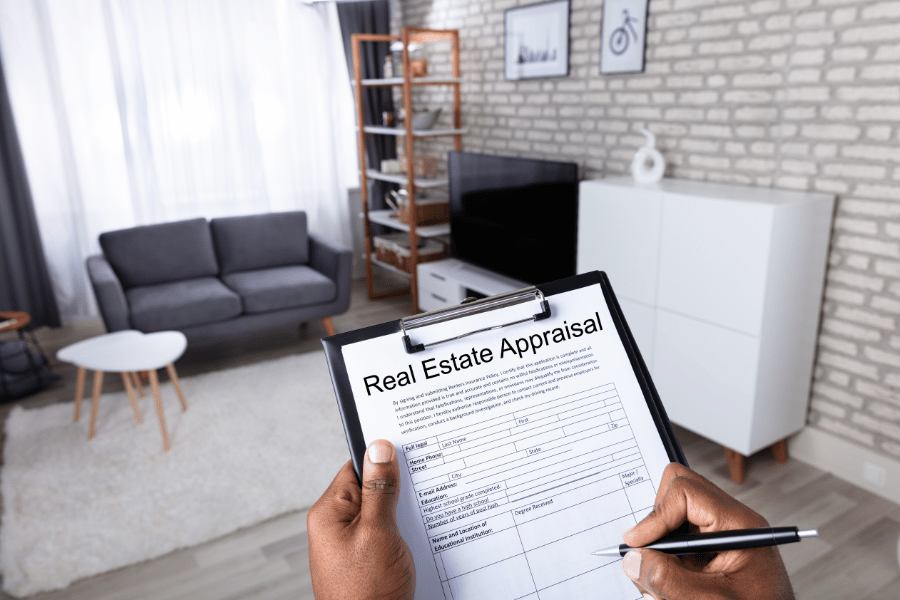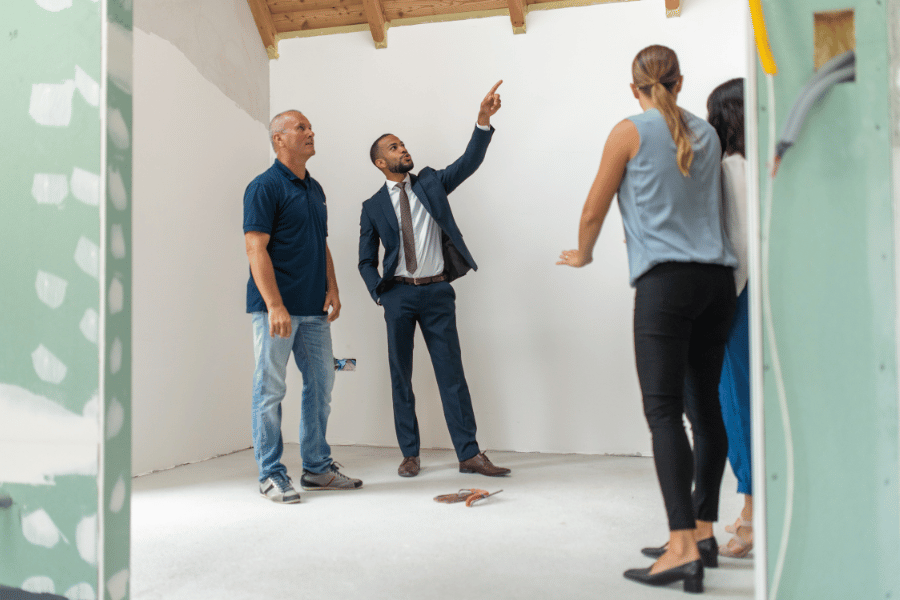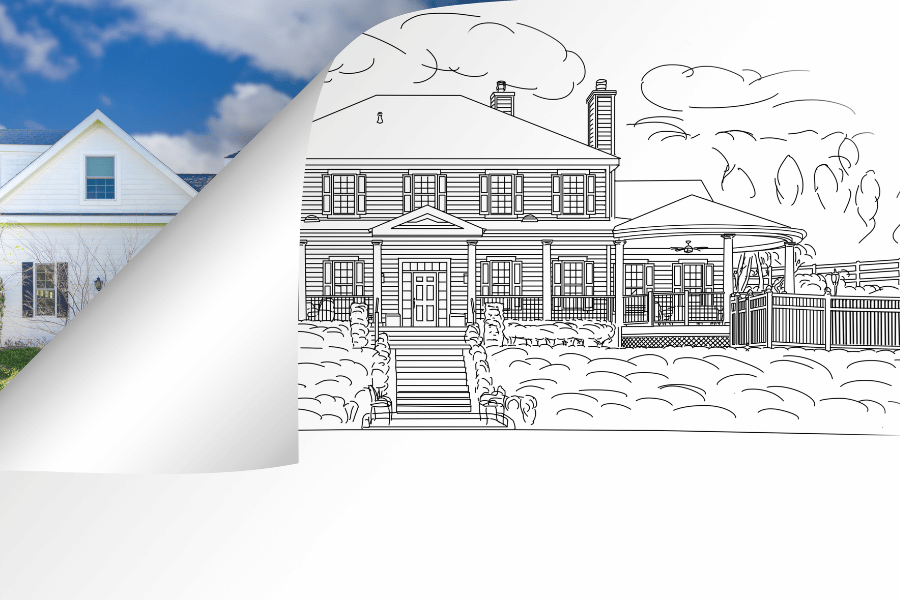What Is ARV In Real Estate?
Figuring out your home's future value can be tricky, but learning to calculate ARV makes it easier! Follow along as we discuss what ARV is and how to calculate it.
Experienced home flippers and investors will calculate ARV to predict a home's future value and secure financing for repairs, but what exactly is it? It is a valuable resource for anyone looking to make changes to their house.
In this guide, we're going to discuss everything you need to know about ARV, when to use it, and how it can help your home-buying process.

1. What is ARV?
ARV, or after-repair value, is the estimated value of a property after completed renovations, not in its current condition. ARV takes the value of the final rehabbed property into consideration and serves as a way to determine how much money you should put into an investment. House flippers most commonly use ARV as a way to gauge the worth of a fixer-upper property, including how much it can be bought and then resold for after repairs.
After repair value can also be used to secure a loan for the cost of actually "flipping" the house. Lenders often offer renovation mortgages or loans specifically used for home renovations, with the maximum loan being roughly 65% of the ARV. Additionally, house flippers and investors will use ARV to buy a property at a discounted purchase price, considering the cost of future repairs.
Lastly, the after-repair value will also define an investor's exit strategy and reveal which real estate financing route is best.
House flipping
House flipping refers to buyers who purchase distressed properties, fix them, and sell them for a profit. Fixer-uppers are found via foreclosures, bank short sales, or property auctions. House flippers will want to spend their money wisely and invest in distressed properties that require quite a bit of work. Once they've found a property, they invest in renovations that will increase the property's resale value.
Investments
An investment property is defined as real estate purchased to generate income (i.e., earn a return on the investment) through rental income or appreciation. Investment properties are usually purchased by a single investor or a pair or group of investors.
2. How to calculate ARV
To calculate ARV, an appraiser will look at the property to determine its current value, then the value after it is repaired. They will look at repairs such as adding square footage, adding rooms or bathrooms, moving walls, etc. They will also look at comparables to the property after the planned repairs and improvements are complete. The appraiser will determine the property's ARV based on the comp's differences or similarities to the property in question.
Formula:
(purchase price) + (value from renovations) = After Repair Value
The formula is a great way to get a decent estimate; however, if you're using ARV in order to make an offer on a property or use it to secure financing, you'll want to do the following:
Evaluate the comparables
Comparables - or "comps" - are comparable properties in a specific area that you're looking to buy or sell in. They are used to determine the value of a home by comparing it to similar properties sold in the same neighborhood or an area as close as possible to the house being valued. Comparables can most easily be found on the MLS (multiple listing service). Comps should be:
- In the same neighborhood as the house you're renovating
- Similar square footage and style of the property
- A similar age to the property
- In a similar condition to the property (in terms of upgrades)
Real estate agents typically use 3-5 comparable properties to determine how much others paid for their renovations accurately. The agents will use the comps for efficient market analysis and average their selling prices to get a good idea of what their own ARV should be like.
Appraise the property
Having your property appraised is one of the most important things you can do to calculate your ARV. You can better understand what your property is worth before the value of renovations is added. Appraisers will typically look at the following:
- Overall condition
- Property size in square feet
- Number of amenities, including the number of bedrooms and bathrooms
- Curb appeal
- Location
Appraisers will look at more aspects of the home and property and, in the end, will be able to give you a reasonable estimate of the current value. Since the housing market is up and down, it's essential to also get an appraisal done after the renovations are complete. Your home may be appraised at a higher or lower value than what the ARV was estimated to be. Hence, a post-renovation appraisal is essential in determining an accurate listing price.

Assess the value of repairs
The last thing you'll want to do is assess the value of repairs. While an appraiser is looking at your home to determine market value, they can also point out repairs that need to be made and what those repairs will cost. Defining areas that need to be fixed, along with your planned repairs, keeps you from encountering any unexpected costs after calculating the ARV.
3. The 70% Rule
Real estate investors should use the 70% rule to ensure they make a 30% return on their investment (ROI). It is essentially a guideline in the real estate investment business that states no bid price at the beginning of a project should exceed 70% of the ARV minus estimated repair costs.
Formula:
(ARV X 70%) - Estimated repairs = Maximum purchase target
Lenders will also use the 70% rule to determine how much they are willing to lend. They calculate 70% to determine the maximum amount.
Formula:
After repair value X 70% = maximum loan amount
4. Renovation Mortgages
While most mortgages can't exceed the home's value minus your equity or down payment, a renovation mortgage has more flexibility. A renovation mortgage is a type of mortgage that includes funds for the home and repairs and improvements. You should consider getting a renovation mortgage if you:
- Don't have enough cash for the purchase and repairs
- Want to buy a home in poor condition that wouldn't qualify for financing
- Have the patience to deal with extra loan paperwork and inspections
- Can complete renovations in six to 12 months or less
Pros of a renovation mortgage
- Buying a home not otherwise eligible for financing
- Potential for significant home equity after renovations
- Low-interest rate
Cons of a renovation mortgage
- Limits and oversight on the use of renovation funds
- Extra paperwork and inspections
- Not every lender offers them

5. ARV limitations
ARV can be very beneficial to home investors and house flippers looking to determine an offer price or decide whether or not renovating a property is in the best interest. However, ARV does have risks and limitations.
Time
ARV only accounts for the value and potential value of a property during the time that it was estimated. Things are changing daily, so even after looking at comparable properties and checking for repairs, problems can arise, or changes could be made. The renovation costs could end up being more than initially planned.
The real estate market
The housing market is continuously fluctuating. The value of the comparable properties you used to determine your home's ARV can go up or down, devaluing your renovations. Your value can also fluctuate if the comparables you used weren't entirely accurate or comparable to the home you renovated.
Appraiser's opinion
Appraisers can value certain aspects of a property differently than a flipper or investor would. When calculating ARV, you also risk the property being worth considerably less than the estimated ARV when it's appraised after the renovations are complete.
6. How is ARV used to flip houses?
ARV is a handy rule of thumb and is widely used in the house-flipping business. House flipping typically refers to buyers who purchase distressed properties, fix them, and then resell them for a profit. Properties are usually found via foreclosures, bank short sales, or property auctions. House flippers will want to invest in renovations that will increase the property's resale value and attract potential buyers' attention.
House flippers will use ARV to guess the future sale price of a home but also to buy a house for a discount and secure the funds for repairs (renovation mortgage, etc.)
7. What is the BRRRR method?
If you've heard of ARV, you've most likely heard of the BRRRR method, so let's discuss it!
The BRRRR method, or the Buy, Rehab, Rent, Refinance, Repeat method, is a real estate investment approach that involves flipping a distressed property, renting it out, and then getting a cash-out to refinance on it to fund further rental property investments. If done correctly, the BRRRR method can provide passive income and a revolving method for purchasing and owning rental property. Here are the steps:
- Buy a property: you should be looking for distressed properties that need work to get up to code and ready to rent. Distressed homes are typically cheaper to purchase.
- Rehab the property: to rehab, you will renovate the property to make structural, safety, and aesthetic improvements and prepare it for renters.
- Rent out the property: determine the rental price and find people to rent the home by either listing it or using your sphere of influence.
- Do a cash-out refinance on the property: by doing this, you convert your equity into cash. You can access your equity by taking out a bigger mortgage loan and borrowing more money than you currently own. The cash can be used for anything, including purchasing another property.
- Use funds from refinance to buy another property: Using the funds from your cash-out refinance, you'll buy another distressed property and start the process over again.
A distressed property is a home on the brink of foreclosure or already owned by the bank. Foreclosures happen when a homeowner is not able to make their monthly mortgage payments.
8. FAQ
What is a good ARV in real estate?
(ARV X .70) - Repair cost + maximum purchase price. The formula suggests that no purchase price should ever go over 70% of the property's future value after repair costs are considered.
What is the max loan to ARV
70% is the standard maximum percentage of the ARV, with anything above 70% considered to be too risky for the lenders to lend on.
How does an ARV loan work?
After Repair value is designed to take into account the current value of your property plus the value of any repairs or renovations planned in the process of getting a renovation loan to purchase or refinance your home.

What Is ARV & How To Calculate It - Final Thoughts
ARV can be extremely helpful to house flippers, investors, and homeowners looking to increase the value of their property and ensure a healthy return on investments. However, since it's an estimated value, it does carry risks. Doing as much research as possible is essential, such as looking at the best comps, using an experienced appraiser, etc.
If you're looking for investment properties, fixer-uppers, or renovating your own home, we'd be happy to help! We have a group of experienced agents that would be more than happy to answer any questions or find the perfect properties for you!
Raleigh Realty is a local real estate company specializing in home buying and selling. We've got you covered if you're interested in real estate in Raleigh or the surrounding areas. Feel free to contact us or visit our website. We are always here to lend a helping hand, find dream homes, and answer any and all real estate-related questions.
If you found our guide helpful, share it with family, friends, or anyone you know that is currently looking to invest in or flip houses!
